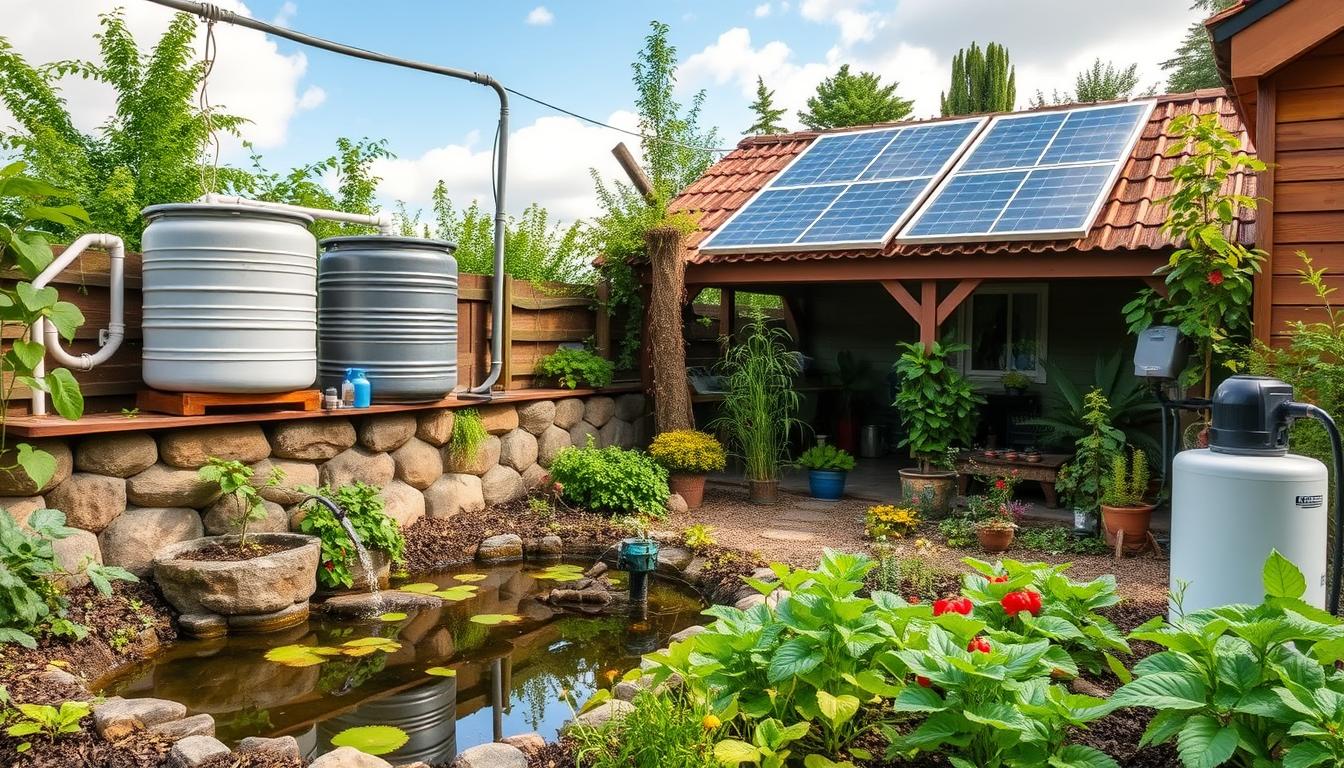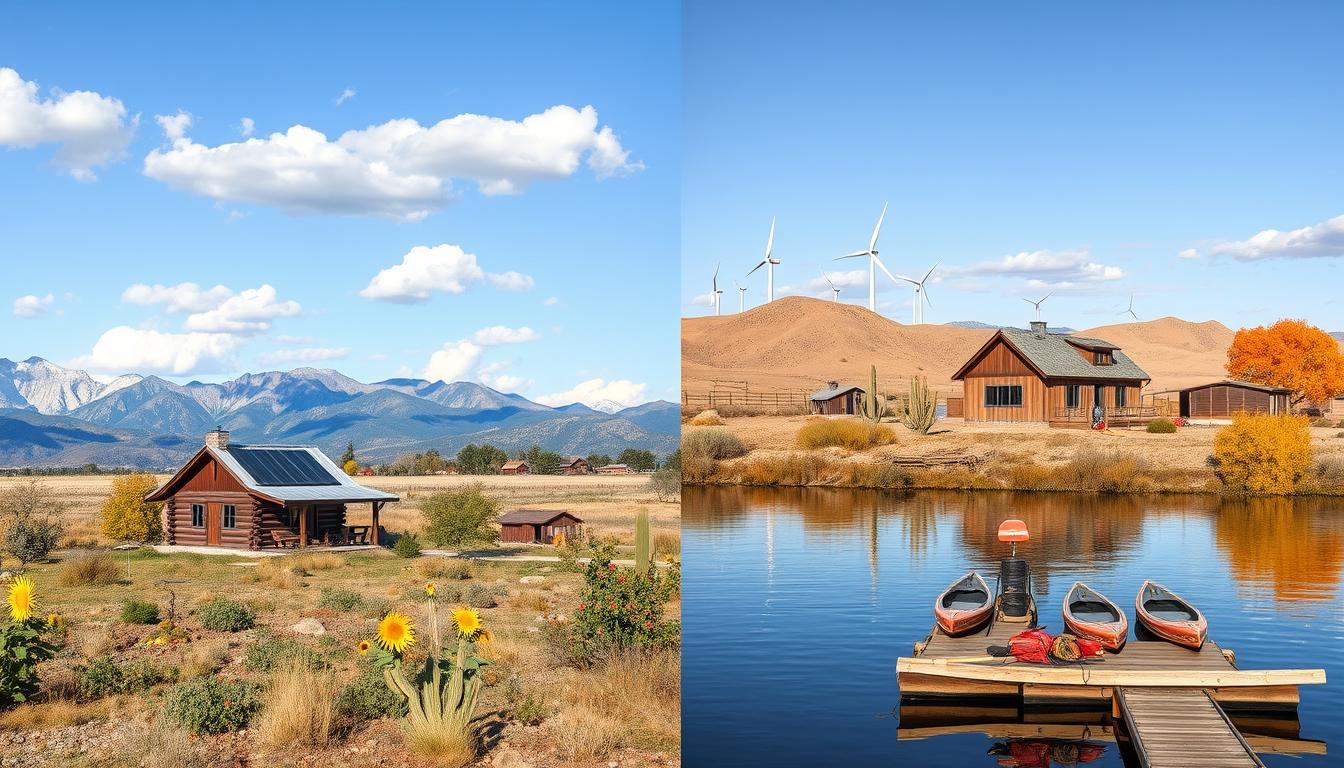In today’s fast-changing world, having a steady food supply is key. Whether you’re getting ready for disruptions or want to live more independently, finding sustainable food sources is essential. This article looks at various sustainable food options to help you survive tough times.
Key Takeaways
- Sustainable food sources provide long-term food security and self-reliance
- Growing your own fruits and vegetables, raising livestock, and foraging for wild edibles are effective strategies
- Sustainable fishing, aquaculture, and food preservation techniques can complement your food system
- Implementing permaculture principles and community involvement can help create a resilient food network
- Addressing the challenges of sustainable food sources is crucial for long-term success
What are Sustainable Food Sources?
Sustainable food sources mean making, sharing, and eating food in a way that lasts. They don’t use up natural resources or hurt the environment. These foods are key for keeping us fed during tough times.
Definition and Importance
These foods are good for the planet, fair for people, and make sense financially. They use resources that can be replaced, create less waste, and cut down on greenhouse gases. Sustainable food is vital for a food system that can handle climate change, more people, and less resources.
Types of Sustainable Food Sources
There are many kinds of sustainable food sources, like:
- Self-grown produce, such as fruits and vegetables cultivated in a personal or community garden
- Locally sourced meats and dairy products from small-scale, sustainable farms
- Wild-foraged foods, such as edible plants, mushrooms, and berries collected responsibly from natural environments
- Aquaculture, the farming of fish, shellfish, and aquatic plants in a controlled and sustainable manner
These foods are good for us and help protect nature. They support small farmers and lessen the food system’s harm to the environment.
“Sustainable food sources are the foundation of a healthy, resilient, and self-reliant community.”
Growing Your Own Fruits and Vegetables
If you want to be more self-sufficient and cut down on industrial food, growing your own food is a great idea. By having a home garden, you get to enjoy fresh, tasty produce. You also reduce your carbon footprint and food miles.
Starting a Garden
Start by picking the right spot for your garden. Look for a place that gets a lot of sunlight and has good drainage. Add organic stuff like compost or manure to the soil to make it better.
Then, figure out what you want to grow. Mixing vegetables, fruits, herbs, and flowers makes your garden lively and diverse.
Crop Rotation and Companion Planting
- Use crop rotation by changing the crops in the same spot every year. This stops pests and diseases and keeps the soil healthy.
- Try companion planting by placing certain plants together. For example, tomatoes and basil or carrots and radishes. This helps plants grow better and keeps pests away.
By using gardening, crop rotation, and companion planting, you can make a garden that takes care of itself. You’ll get lots of fresh, healthy food all year.
“A garden is a grand teacher. It teaches patience and careful watchfulness; it teaches industry and thrift; above all it teaches entire trust.” – Gertrude Jekyll
Raising Livestock for Food
Raising your own livestock is a great way to have food for the long term. You can choose animals like chickens, goats, or rabbits for meat, eggs, and dairy. This method cuts down on buying food and gives you control over your meals.
When thinking about raising animals for food, consider their housing, food, and care. This keeps them healthy and ensures you have food. Knowing what different animals need helps you pick the right ones for your place and lifestyle.

Raising livestock lets you make many self-sufficient food sources. Chickens give you eggs, goats give milk and dairy, and rabbits offer lean meat. Mixing different animals means you can meet your family’s food needs in a sustainable way.
But, raising animals has its challenges. You need space, good fences, and time for their care. With good planning, you can overcome these issues and enjoy the benefits of a self-sufficient raising livestock system.
Sustainable Food Sources for Meat and Dairy
Looking for long-term food security? Sustainable meat and dairy are key. Chickens and goats are great choices. They offer protein, eggs, and dairy products.
Chickens and Eggs
Chickens are great for sustainable meat and eggs. They need little space and are easy to care for. They can eat kitchen scraps and foraged greens.
Keeping chickens gives you fresh eggs and poultry. With proper care, like a clean coop and balanced diet, you get the best from chickens and eggs.
Goats and Milk
Goats are another good choice for meat and dairy. They eat a lot of different plants, making them perfect for small farms. They give you rich milk and lean meat.
- Goats need little space and fit well in small farms.
- Their milk makes cheese, yogurt, and other dairy products.
- Managing a few goats gives you steady sustainable meat and dairy.
Adding chickens and goats to your farm means more protein, eggs, and dairy. It also helps the environment and makes your food system stronger.
Foraging for Wild Edibles
In today’s fast world, many have lost touch with nature’s abundance. Foraging for wild edibles is a way to reconnect with the earth. It lets you find nutritious and tasty foods right in your area.
Identifying Safe Plants
Knowing how to identify safe and edible plants is key in foraging. You need to understand plant types and tell them apart from harmful ones. This knowledge keeps your foraging safe and fun.
- Learn to spot common wild edibles like dandelions, chickweed, and wild berries in your area.
- Use field guides, online tools, or get advice from experts to improve your plant recognition.
- Be careful and only eat a plant if you’re sure it’s safe.
Foraging Techniques and Ethics
Good foraging means knowing how to find plants and following foraging techniques and ethics. These practices help keep wild plants safe and protect nature’s balance.
- Take only what you need to leave enough for others and the future.
- Don’t take too much from one spot to avoid harming the ecosystem.
- Know the rules about foraging in public or private places.
- Follow foraging ethics by leaving no trace and being gentle with the environment.
Foraging opens a door to a world of wild edibles and connects you closer to nature. Always put safety, sustainability, and respect for nature first in your foraging trips.
Sustainable Fishing and Aquaculture
We need sustainable fishing and aquaculture for long-term food security. These methods give us a steady source of protein and protect our aquatic ecosystems.
Sustainable fishing means catching fish without harming the ocean. It makes sure we don’t take too many fish, so they can keep coming back. Small fishing groups often use old-school methods that are good for the ocean.
Aquaculture, or fish farming, is another way to get self-sufficient food sources. When done right, it can give us a lot of fish while keeping the water clean. New ways of farming, like aquaponics, grow fish and plants together. This is a smart way to make food.
“Sustainable fishing and aquaculture are not just about feeding ourselves today, but ensuring a bountiful ocean for generations to come.”
By choosing sustainable fishing and aquaculture, we can eat seafood without harming the ocean. These practices are key to keeping our food supply safe for the future.

Sustainable Food Preservation Techniques
Long-term food security is key, and sustainable preservation methods are vital. Techniques like canning, dehydrating, fermentation, and root cellaring are reliable. They help keep your food safe for the future.
Canning and Dehydrating
Canning seals foods in jars or cans, keeping them fresh and nutritious for a long time. Dehydrating removes moisture, making foods dry and easy to store. You can make everything from jerky to powdered herbs using this method.
Fermentation and Root Cellars
Fermentation uses beneficial bacteria to preserve foods naturally. It turns foods like sauerkraut and pickles into tasty, nutritious snacks. Root cellars store foods in a cool, dark place. They’re perfect for keeping apples and other produce fresh for months.
Learning these preservation methods ensures you always have nutritious food. Whether you’re canning, dehydrating, fermenting, or using a root cellar, these methods are key to a self-sufficient food system.
“Sustainable food preservation is the cornerstone of long-term food security. By harnessing the power of nature, we can safeguard our food supply and build a more resilient future.”
Creating a Sustainable Food System
Creating a sustainable food system is key for our future and independence. At its core, we find permaculture. This design philosophy aims to build ecosystems that heal and sustain themselves. By using permaculture, we can grow a food supply that fits with nature’s cycles.
Permaculture Principles
Permaculture teaches us to work with nature, not against it. It includes practices like:
- Using polycultures, which mix different crops to mimic nature
- Reducing outside help and using what we have locally
- Recycling waste to feed the soil
- Designing systems that do more than one thing
Community Involvement
Creating a sustainable food system needs teamwork in the community. Sharing knowledge, resources, and tasks helps us build a stronger, fairer food network. This might mean:
- Starting community gardens and food forests
- Sharing seeds and tools
- Creating local food centers and ways to get food to people
- Offering workshops on farming in a green way
Working together is the key to a sustainable food system. Using permaculture and community strength, we can feed our bodies, communities, and the earth for years to come.
“A sustainable food system is not just about what we eat, but how we produce, distribute, and consume it.”
Challenges and Solutions
Starting a sustainable food project can be tough, like dealing with little space or not knowing where to begin. But, with the right plans and a dedication to being green, these hurdles can be jumped over.
One big challenge is finding enough space, especially for city or suburban folks. Luckily, new ways like vertical gardening, using containers, and farming on rooftops can make the most of small areas. This lets people grow a wide variety of fruits, veggies, and herbs.
Another hurdle is getting the resources you need, like water, soil, and food for animals. To overcome this, you might look into collecting rainwater, making compost, and using animals in a way that helps the environment. Also, finding local suppliers of eco-friendly resources can make things easier.







